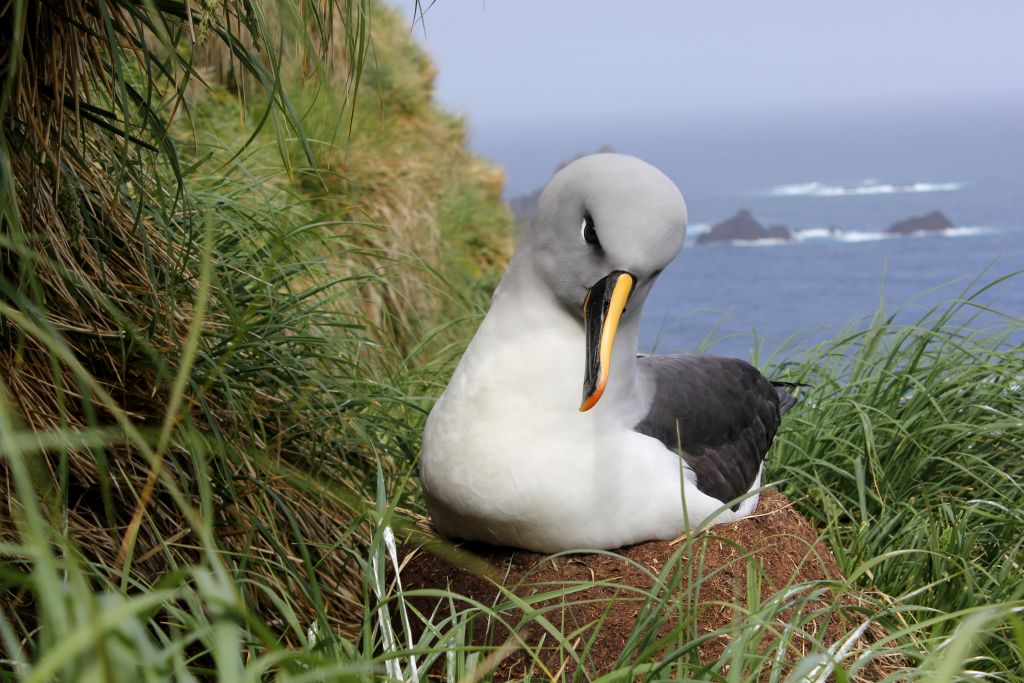
A breeding Grey-headed Albatross on Australia’s Macquarie Island, now free of introduced vertebrates following several successful eradication efforts; photograph by Melanie Wells
Dena Spatz (Pacific Rim Conservation, Honolulu, Hawaii, USA) and colleagues have published open access in the journal Scientific Reports on a synthesis of 1550 eradication attempts of introduced vertebrates on 998 islands.
The paper’s abstract follows:
“Islands are global hotspots for biodiversity and extinction, representing ~ 5% of Earth’s land area alongside 40% of globally threatened vertebrates and 61% of global extinctions since the 1500s. Invasive species are the primary driver of native biodiversity loss on islands, though eradication of invasive species from islands has been effective at halting or reversing these trends. A global compendium of this conservation tool is essential for scaling best-practices and enabling innovations to maximize biodiversity outcomes. Here, we synthesize over 100 years of invasive vertebrate eradications from islands, comprising 1550 eradication attempts on 998 islands, with an 88% success rate. We show a significant growth in eradication activity since the 1980s, primarily driven by rodent eradications. The annual number of eradications on islands peaked in the mid-2000s, but the annual area treated continues to rise dramatically. This trend reflects increases in removal efficacy and project complexity, generating increased conservation gains. Our synthesis demonstrates the collective contribution of national interventions towards global biodiversity outcomes. Further investment in invasive vertebrate eradications from islands will expand biodiversity conservation while strengthening biodiversity resilience to climate change and creating co-benefits for human societies.”
Read a popular account of the publication here.
Reference:
Spatz, D.R., Holmes, N.D., Will, D.J., Hein, S., Carter, Z.T., Fewster, R.M., Keitt, B., Genovesi, P., Samaniego, A., Croll, D.A., Tershy, B.R. & Russell, J.C. 2022. The global contribution of invasive vertebrate eradication as a key island restoration tool. Scientific Reports 12, 13391. doi.org/10.1038/s41598-022-14982-5.
John Cooper, ACAP News Correspondent, 16 August 2022

 English
English  Français
Français  Español
Español